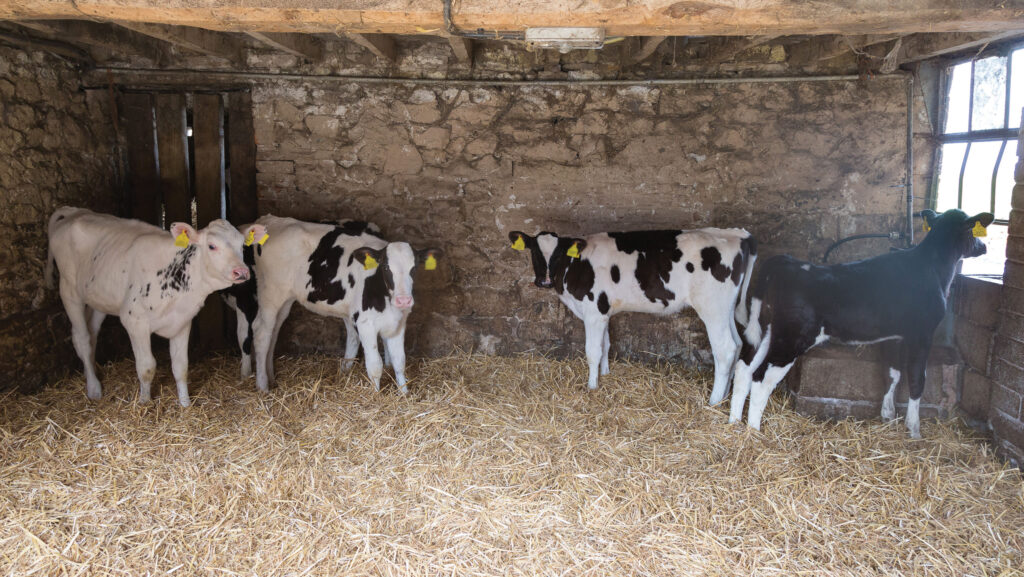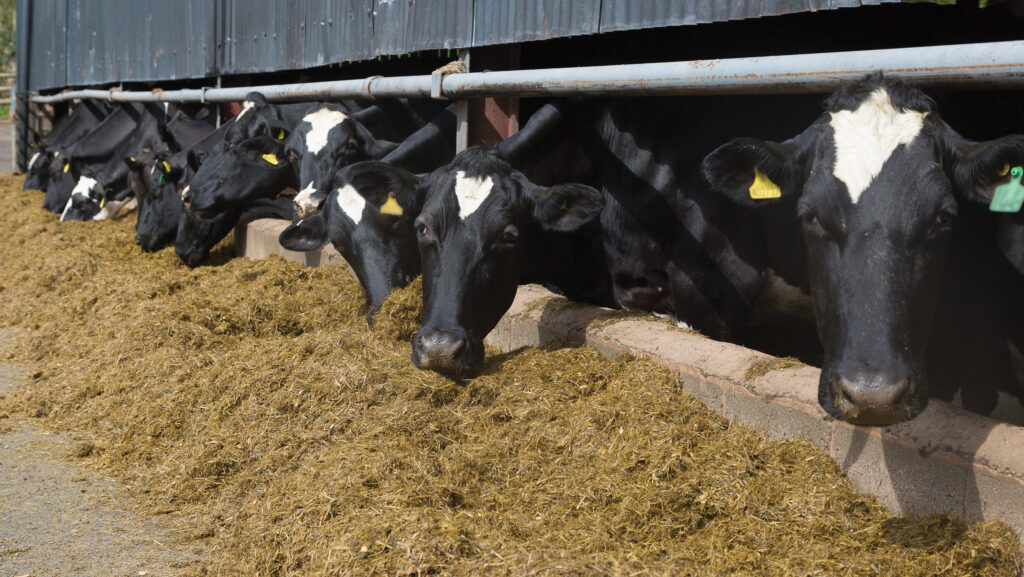An owner and farmworker have swapped places on a dairy farm on the Welsh Borders.
The reversal of roles for semi-retired farmer Philip Davies and his former herd manager, Hannah Edwards, is not without its challenges, but they say these are outweighed by the rewards of the new setup.
See also: How a new entrant got backing to set up in dairy
Hannah grew up with her five brothers on a small dairy farm. She had a place at Cardiff University to study biochemistry but took a year out to consider her options.
She got a job nearby helping Philip with his dairy herd at Hill Farm, a few miles west of Shrewsbury.
She planned to stay for three months in 2009 to earn some money for travelling and ended up staying for a year, then returned to dairying full time after her travels.
When her father died in 2016, Hannah realised she “needed to start building something”.
That something was her own herd, and Philip gifted her a calf from his herd to start her off. “I only gave her the first one,” he stresses.
Getting started
She built numbers gradually by buying at specialist sales and investing in a few fresh-calved heifers at Hill Farm.
Her stock ran with the main herd until two years ago, when Philip, forced to raise money for a divorce settlement, said he was thinking of selling up.
The sale of 180 cows and 180 youngstock went ahead four months later – but not before Hannah had secured a £50,000 loan to invest in more cows.
“I put together a five-year business plan and borrowed money against the 16 milkers and 16 youngstock I owned by that time,” she explains. “I bought 38, mostly milkers, with a few in-calf heifers.”
Hannah now has 70 cows, a much smaller herd than Philip’s, but one more suitable for the land available.
Philip Davies and Hannah Edwards © MAG/Judith Tooth
Farm facts: Hill Farm, Bausley, Shropshire/Welsh Borders
- 42ha permanent pasture
- 162m above sea level
- 70 pedigree Holsteins (Whirlwind prefix)
- Average yield of 8,000 litres at 4.2% butterfat and 3.4% protein
- Supply Leprino Foods for mozzarella production
- Herd vaccinated against bovine viral diarrhoea and infectious bovine rhinotracheitis, and tested for Johne’s every six months
Dairy system
Since running her own herd, half the herd now calves between July and September rather than all year round to benefit from an autumn milk bonus.
This also helps manage grazing, which can get “quite tricky” in summers when the banks burn off, according to Philip.
When that happens, Hannah takes up the fences used for the usual 21-day rotation to allow the cows to graze what grass they can find, and buffer-feeds. Milk from forage averages 3,300 litres.
The winter ration comprises grass and maize silage, rape meal and milled wheat. Contractors are used to make grass silage (usually two cuts a year to keep costs down) while maize is grown on a neighbouring farm.
Hannah is paid by the milk buyer not to feed soya, opting instead for protected rape meal, which is incorporated into an 18% nut in winter and a 16% nut in summer, fed through the 12/12 herringbone parlour.
Average concentrate use is 5.5kg a cow a day.
“Philip was dead against me cutting soya out of the diet – he thought I would lose milk production. I wanted to try it because I know that growing soya causes destruction to habitats,” she explains.
The soya-free nut is more expensive, but the cost is more than covered by the bonus, and after using it for 12 months, she has seen no reduction in performance.
Sexed semen is now used up to third calvers to profit from their better conception rates, with beef semen reserved for older cows. Dairy beef calves are sold at five to six weeks of age to help with cashflow.

© MAG/Judith Tooth
Herd health
Parlour hygiene is paramount with a loose-housed herd, says Hannah. “I don’t get much mastitis, but I would like to have none at all, which is why I’m considering installing cubicles.”
She uses a barrier teat dip in winter and a post-milking spray with fly repellent during the summer months, rather than the iodine-based product Philip used.
“I have seen a reduction in mastitis since doing this,” she says.
She has also added a mineral bolus and a fluke drench at dry-off, while older cows receive an energy-rich bolus to reduce the risk of ketosis. Feet are trimmed annually, and cows go through a footbath once a week.
Calves are given an intranasal pneumonia vaccine at birth and boosters at three and four months old.
“I know it costs money to put preventative measures in place, but in the long run, it should save money,” she reasons.
“Breeding for longevity is important to me,” she adds. “The average age of cows leaving the herd is eight years – I like a cow that stands the test of time.”
How the arrangement works
Hannah lives nearby and rents the land and buildings from Philip. She hires the machinery: a Keenan feeder, a tractor and a loader. She pays for fuel, electricity and maintenance of the milking parlour and bulk tank.
Philip is responsible for feeding and scraping up – a 2.5-hour daily task. He spends a further hour on other jobs around the farm and helps finish off in the evening. He also works off-farm four mornings a week.
Hannah milks 11 times a week; a relief milker covers Sunday afternoons – her only time off – and another milks on Thursdays, when Hannah looks after the feeding to give Philip a lie-in.
Eighteen months into the five-year business plan, the pair say they have tussles about the best way to manage the herd but have settled into a new way of working.
“We have our disagreements, but if we talk about it, we can end up having a laugh,” says Hannah. “It must have been difficult for Philip to suddenly step back.”
Philip says being able to say sorry is important: “Admit defeat – that plays a big part in diffusing a situation.”
Help for new entrants
Hannah Edwards urges more farmers approaching retirement to consider renting their farm to a new entrant.
“Not many of the older generation of farmers see it as an option, but I would definitely encourage them to do it.
“There are so many keen young farmers out there, and getting started is really difficult and opportunities few and far between. I am very grateful to Philip for giving me the opportunity,” she says.
She recently took part in a farm resilience programme organised by the Royal Countryside Fund. This offers free business skills training to family farmers.
“Starting a new dairy business is certainly not for the faint-hearted: it requires a lot of determination, dedication and sacrifice,” she says.
“I started with nothing, and I have no financial help behind me. But I’ve had a lot of support and encouragement from so many people – it’s overwhelming, really.”
For more information about the Farm Resilience Programme, follow the link www.royalcountrysidefund.org.uk.

